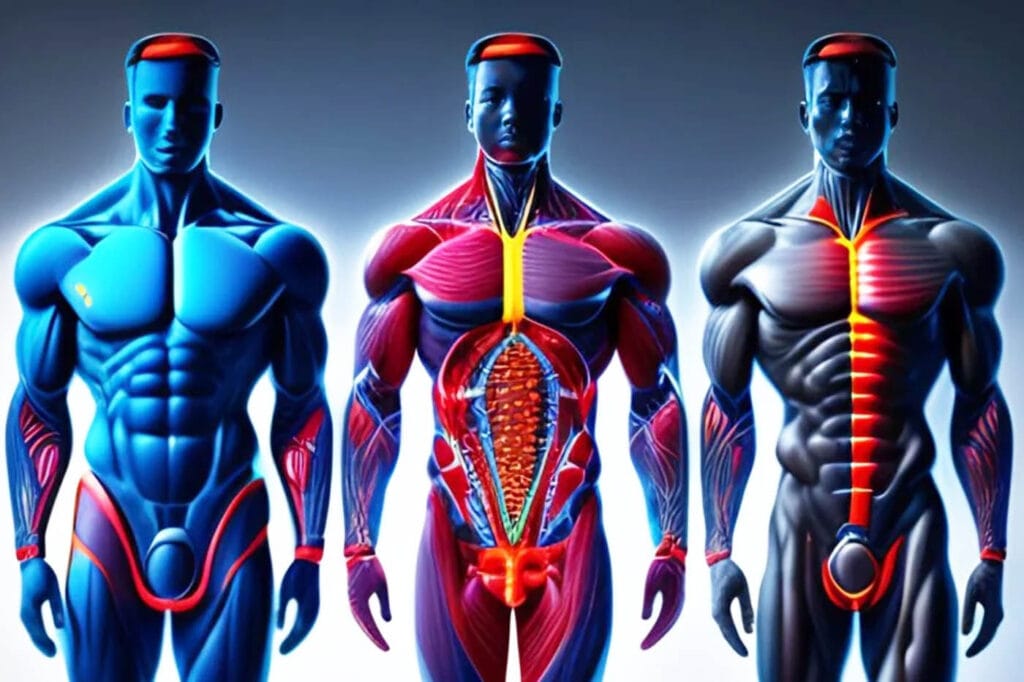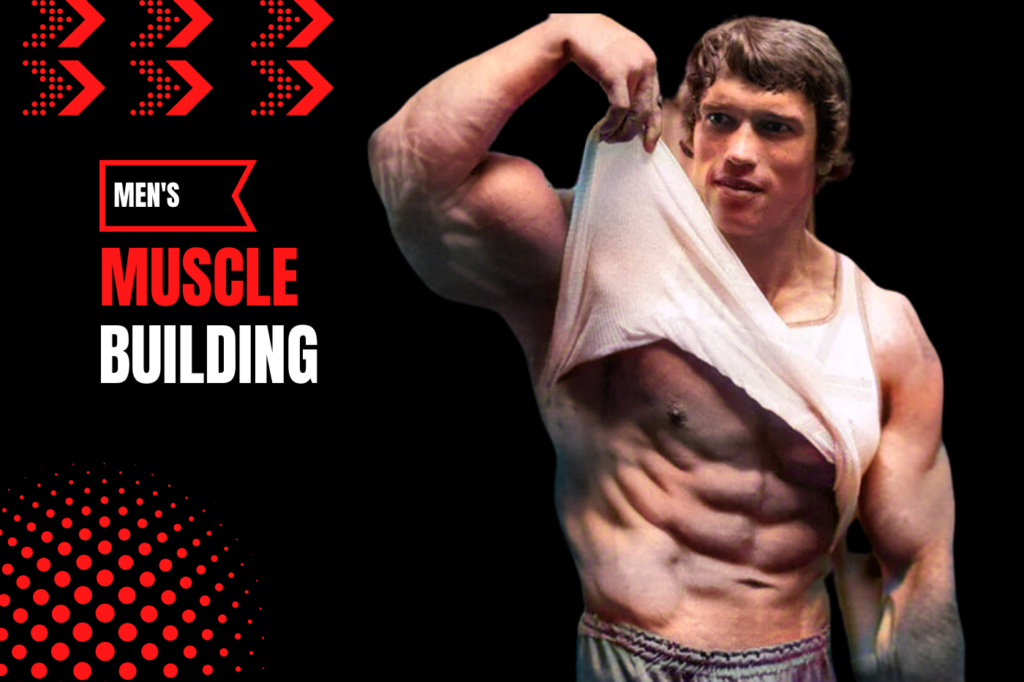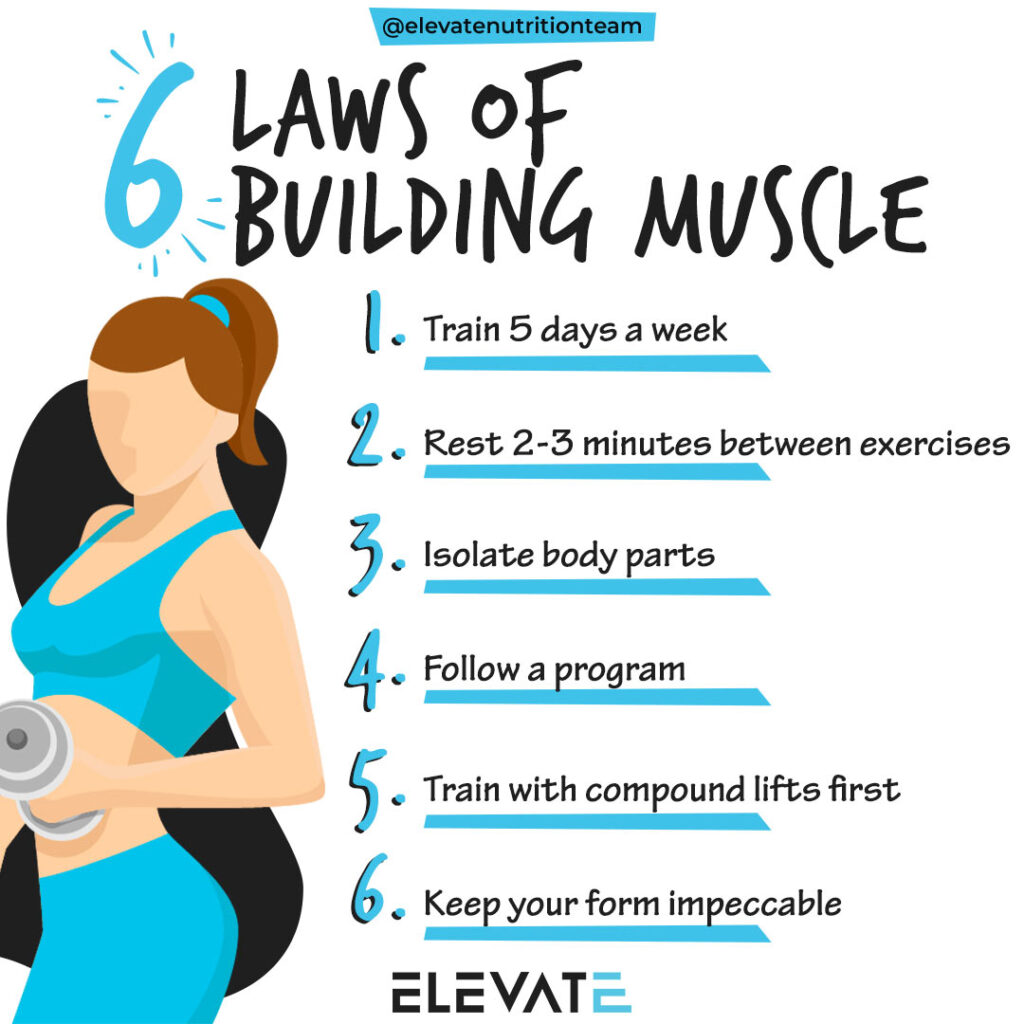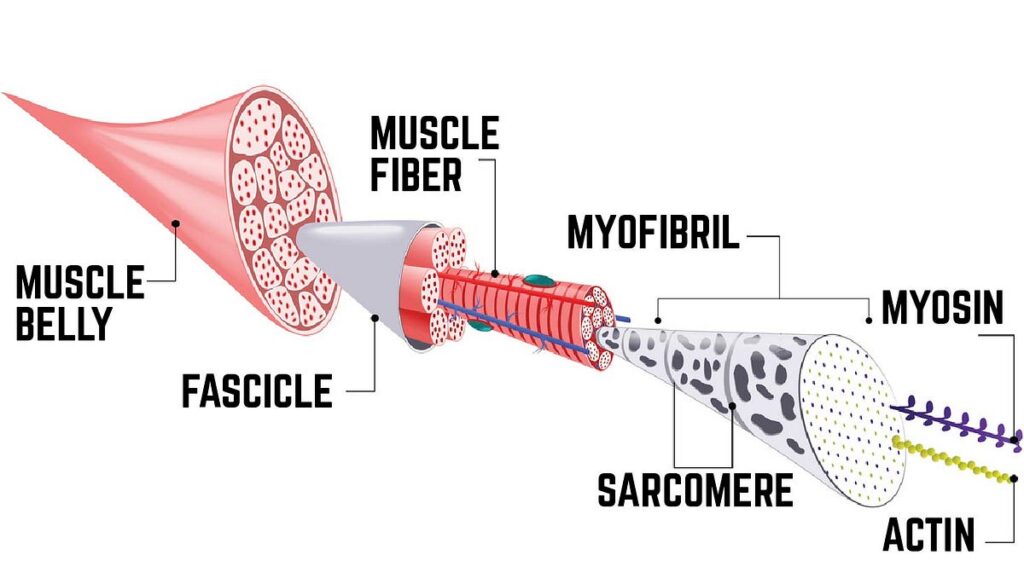Effective muscle growth requires consistent strength training and proper nutrition. Adequate rest and recovery are also crucial.
Building muscle involves more than just lifting weights. A balanced diet rich in protein, healthy fats, and carbohydrates fuels muscle repair and growth. Consistent strength training stimulates muscle fibers, leading to increased strength and size. Incorporating compound exercises like squats, deadlifts, and bench presses ensures engagement of multiple muscle groups.
Sleep and rest are equally important, allowing muscles to recover and grow. Staying hydrated aids in overall performance and recovery. Tracking progress helps in adjusting routines and maximizing results. Combining these elements paves the way for effective muscle growth, enhancing both strength and physique.
Introduction To Muscle Growth
Muscle growth is a key goal for many fitness enthusiasts. Understanding how muscles grow can help you achieve better results. This guide will explain the science behind muscle hypertrophy and the benefits of increasing muscle mass.
The Science Behind Muscle Hypertrophy
Muscle hypertrophy is the process of muscle fibers increasing in size. This happens through a combination of mechanical tension, muscle damage, and metabolic stress.

When you lift weights, you create tension in your muscles. This tension causes tiny tears in the muscle fibers. Your body repairs these tears, making the muscles stronger and larger.
Metabolic stress occurs during high-rep training. This leads to a build-up of metabolites like lactate in the muscles. This stress helps to trigger muscle growth as well.
Benefits Of Increasing Muscle Mass
Increasing muscle mass has many benefits. Here are some of the most important ones:
- Improved Strength: More muscle means more power and better performance in daily activities.
- Enhanced Metabolism: Muscles burn more calories, even at rest. This helps with weight management.
- Better Posture: Strong muscles support your spine and improve posture.
- Injury Prevention: More muscle mass helps protect joints and reduces injury risk.
- Increased Confidence: A stronger body can boost your self-esteem and confidence.
Setting Realistic Goals
Effective muscle growth requires setting realistic goals. These goals keep you motivated and focused. They help track progress and adjust your plan as needed. Let’s dive into the essential aspects of setting realistic goals for muscle growth.
Short-term Vs Long-term Objectives
Understanding the difference between short-term and long-term objectives is crucial. Short-term goals act as stepping stones. They bring immediate motivation and satisfaction.
Long-term goals focus on the bigger picture. They help you stay committed over time. Achieving short-term goals builds confidence for long-term success.
| Short-term Goals | Long-term Goals |
|---|---|
| Increase weight lifted by 5% in a month | Gain 10 pounds of muscle in a year |
| Improve form for specific exercises | Compete in a bodybuilding contest |
| Track workouts consistently for 4 weeks | Maintain a healthy diet for overall muscle growth |
Assessing Your Body Type
Assessing your body type helps set realistic goals. There are three main body types: ectomorph, mesomorph, and endomorph. Each type responds differently to training and diet.
Ectomorphs are naturally thin. They have a hard time gaining muscle. Focus on high-calorie diets and strength training.
Mesomorphs have a muscular build. They gain muscle easily. Balance strength training and cardio for best results.
Endomorphs have a larger frame. They gain weight quickly. Prioritize a clean diet and regular exercise.
- Ectomorph: High-calorie diet, strength training
- Mesomorph: Balanced training, moderate cardio
- Endomorph: Clean diet, regular exercise
Understanding your body type helps tailor your goals. It ensures that your plan is effective and achievable. This personalized approach leads to better muscle growth and overall fitness.
Optimizing Your Diet For Growth
Effective muscle growth depends not just on workouts but also on a well-optimized diet. Your muscles need the right nutrients to grow and recover. Let’s explore how you can optimize your diet for maximum muscle growth.

Macronutrients: The Building Blocks
Macronutrients are essential for muscle growth. They include proteins, carbohydrates, and fats.
- Proteins: These are the primary building blocks for muscle tissue. Aim for 1.6 to 2.2 grams of protein per kg of body weight daily.
- Carbohydrates: Carbs provide energy for your workouts. Include complex carbs like oats, brown rice, and sweet potatoes.
- Fats: Healthy fats support hormone production. Good sources include avocados, nuts, and olive oil.
Micronutrients: The Unsung Heroes
While macronutrients get most of the attention, micronutrients are equally important. They include vitamins and minerals that support various bodily functions.
Key micronutrients for muscle growth include:
- Vitamin D: Enhances muscle function and strength. Get it from sunlight and fortified foods.
- Calcium: Important for muscle contraction. Sources include dairy, leafy greens, and fortified plant milk.
- Magnesium: Supports muscle recovery. Found in nuts, seeds, and whole grains.
Hydration And Its Role
Hydration is crucial for muscle growth. Water helps transport nutrients to your muscles and removes waste products.
Follow these tips for proper hydration:
- Drink at least 8 glasses of water daily.
- Increase water intake during and after workouts.
- Include water-rich foods like fruits and vegetables.
Staying hydrated ensures your muscles function optimally and recover faster.
| Nutrient | Recommended Daily Intake | Sources |
|---|---|---|
| Protein | 1.6-2.2 grams/kg body weight | Chicken, fish, tofu, beans |
| Carbohydrates | 45-65% of total calories | Oats, brown rice, sweet potatoes |
| Fats | 20-35% of total calories | Avocados, nuts, olive oil |
| Vitamin D | 600 IU | Sunlight, fortified foods |
| Calcium | 1000 mg | Dairy, leafy greens, plant milk |
| Magnesium | 400-420 mg | Nuts, seeds, whole grains |
Crafting The Right Workout Plan
Crafting the right workout plan is crucial for effective muscle growth. This involves understanding the basics of resistance training, incorporating progressive overload, and timing your rest for optimal recovery. Let’s delve into these essential components to help you achieve your muscle-building goals.
Resistance Training Essentials
Resistance training forms the foundation of any muscle growth plan. It involves exercises that cause your muscles to contract against an external resistance. This resistance can be free weights, machines, or even your body weight.
Here are some key points to consider:
- Compound Movements: Exercises like squats, deadlifts, and bench presses work multiple muscle groups at once.
- Isolation Movements: These exercises, such as bicep curls and tricep extensions, target specific muscles.
- Proper Form: Ensuring correct technique helps prevent injuries and maximizes effectiveness.
Incorporating Progressive Overload
Progressive overload is the gradual increase of stress placed on your muscles during exercise. This principle is vital for continuous improvement and muscle growth.
Follow these steps to incorporate progressive overload:
- Increase Weight: Gradually add more weight to your exercises.
- Increase Repetitions: Aim to complete more reps with the same weight.
- Increase Sets: Add additional sets to your workout routine.
Recovery: Timing Your Rest
Recovery is an often overlooked aspect of muscle growth. Your muscles need time to repair and grow stronger.
Consider the following for optimal recovery:
- Rest Days: Include rest days in your workout plan to allow muscles to heal.
- Sleep: Aim for 7-9 hours of sleep per night for proper recovery.
- Nutrition: Consume a balanced diet rich in protein, carbs, and healthy fats.
By understanding and implementing these elements, you’ll be well on your way to achieving effective muscle growth.
Importance Of Proper Technique
Effective muscle growth relies heavily on the proper technique. Without it, you risk injury and hinder your progress. It’s vital to focus on each movement and exercise to get the best results.

Avoiding Common Mistakes
Many people make common mistakes that slow their muscle growth. Some lift weights that are too heavy. This leads to poor form and possible injury. It’s better to use a weight you can handle with proper technique.
- Using weights that are too heavy can lead to poor form.
- Lifting too quickly reduces muscle tension.
- Neglecting warm-ups and cool-downs increases injury risk.
Focus on quality over quantity. Perform each rep with control and precision. This ensures your muscles work correctly.
Mind-muscle Connection
The mind-muscle connection is crucial for muscle growth. This means being aware of the muscle you’re working during each exercise. It helps you target the muscle more effectively.
Follow these steps to enhance your mind-muscle connection:
- Concentrate on the muscle during each rep.
- Visualize the muscle contracting and relaxing.
- Slow down your movements to feel the muscle working.
By focusing on the mind-muscle connection, you ensure that each exercise targets the intended muscle group.
Supplementation For Enhanced Gains
Building muscle takes hard work. But supplements can help you see better results. The right supplements can boost your muscle growth. They can also improve your workout performance. This section covers some of the best supplements for muscle growth.
Protein Powders And Amino Acids
Protein powders are a top choice for muscle growth. They help repair and build muscles after workouts. Whey protein is very popular. It gets absorbed quickly by the body. Other types include casein, soy, and pea protein. They provide a steady release of amino acids.
Amino acids are the building blocks of protein. Branched-Chain Amino Acids (BCAAs) are crucial. They reduce muscle soreness and improve recovery. They include leucine, isoleucine, and valine. You can find them in supplement form or in high-protein foods.
Creatine And Its Benefits
Creatine is a well-researched supplement. It helps increase muscle mass and strength. It works by providing extra energy to your muscles. This helps you lift heavier weights and do more reps. Creatine also helps with muscle recovery. It is safe and effective for most people.
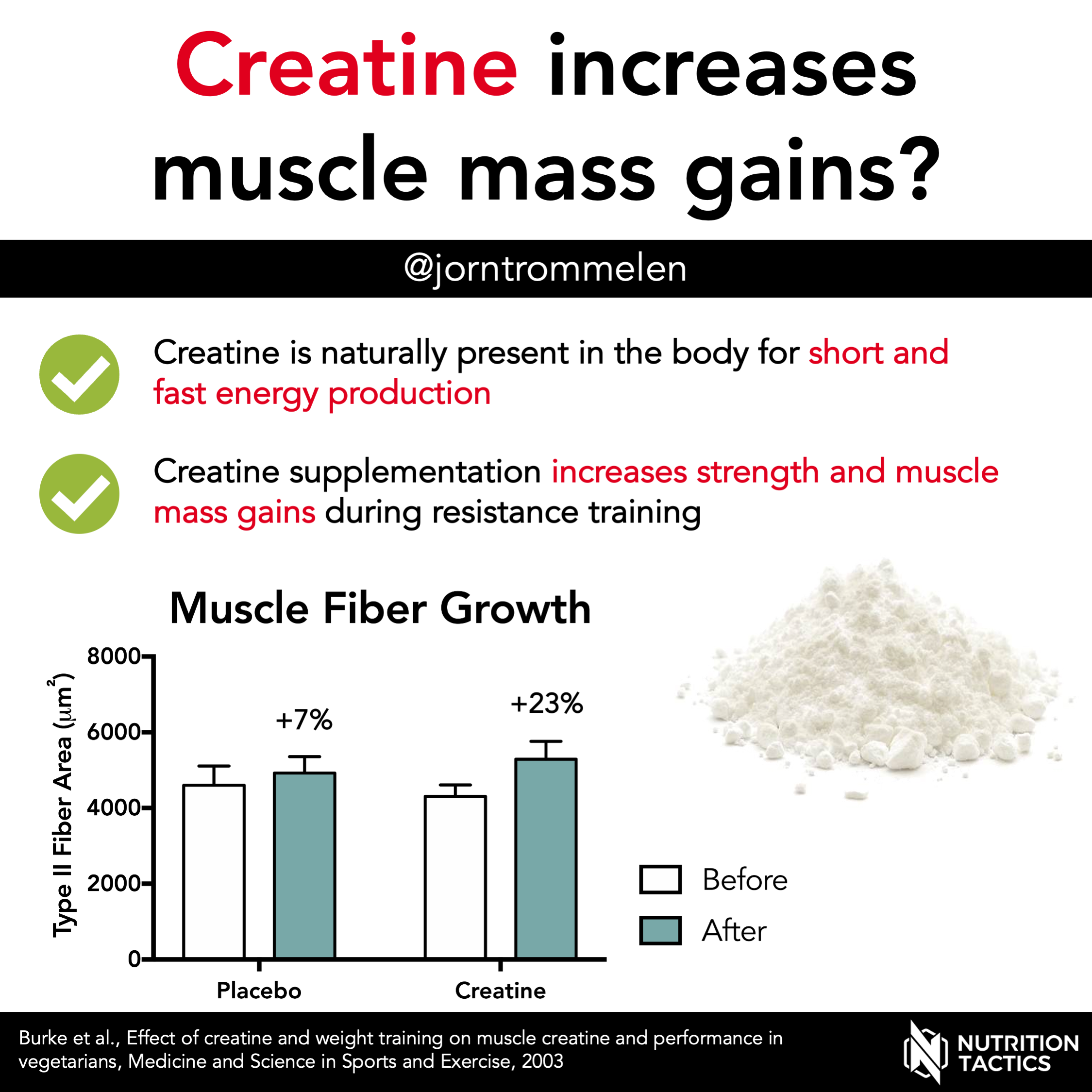
Here are some of the benefits of creatine:
- Increases muscle strength
- Boosts workout performance
- Enhances muscle recovery
- Supports muscle growth
Pre- And Post-workout Supplements
Pre-workout supplements give you energy and focus. They often contain caffeine, beta-alanine, and nitric oxide boosters. These ingredients help you perform better during workouts.
Post-workout supplements help your muscles recover faster. They often include protein, BCAAs, and glutamine. These ingredients help repair muscle fibers and reduce soreness.
Here is a table of common pre- and post-workout supplements:
| Type | Common Ingredients | Benefits |
|---|---|---|
| Pre-Workout | Caffeine, Beta-Alanine, Nitric Oxide Boosters | Energy, Focus, Improved Performance |
| Post-Workout | Protein, BCAAs, Glutamine | Muscle Recovery, Reduced Soreness |
Tracking Progress And Making Adjustments
Building muscle requires more than just lifting weights. Tracking progress and making adjustments are crucial for effective muscle growth. By monitoring your results and tweaking your routine, you can ensure continuous improvement. Let’s delve into how to do this effectively.
Monitoring Strength And Body Measurements
One of the best ways to track your muscle growth is by monitoring your strength. Keep a workout log to record your progress. This log should include the weights you lift, the number of reps, and sets.
Use a table to keep track:
| Date | Exercise | Weight | Reps | Sets |
|---|---|---|---|---|
| 2023-10-01 | Bench Press | 100 lbs | 8 | 3 |
| 2023-10-08 | Bench Press | 105 lbs | 8 | 3 |
In addition to strength, body measurements provide valuable insight. Measure your chest, arms, waist, and legs regularly. This can be done weekly or bi-weekly. Record these measurements in a table to easily spot changes:
| Date | Chest | Arms | Waist | Legs |
|---|---|---|---|---|
| 2023-10-01 | 38 inches | 12 inches | 32 inches | 24 inches |
| 2023-10-15 | 39 inches | 13 inches | 32 inches | 25 inches |
Adapting To Plateaus
Plateaus are a common part of muscle growth. Adapting to plateaus is essential for continued progress. If you notice your strength or body measurements stalling, it’s time to make adjustments.
Here are some strategies to break through plateaus:
- Change your workout routine: Try new exercises to target your muscles differently.
- Increase your weight: Gradually increase the weights you lift to challenge your muscles.
- Modify your reps and sets: Adjust the number of reps and sets to vary the intensity.
- Rest and recover: Ensure you’re getting enough sleep and rest between workouts.
By staying proactive and making these adjustments, you can overcome plateaus and continue your muscle growth journey.
Rest And Recovery Strategies
Effective muscle growth isn’t only about lifting weights. Rest and recovery play a crucial role. They help muscles repair and grow stronger. Incorporating these strategies ensures optimal results and prevents injuries.
Sleep’s Role In Muscle Repair
Sleep is vital for muscle repair. During deep sleep, the body releases growth hormones. These hormones help repair muscle tissues damaged during workouts. Aim for at least 7-9 hours of sleep each night to maximize muscle recovery.
Quality sleep also reduces stress levels. Lower stress helps in faster recovery. Ensure your sleep environment is quiet and dark. This promotes a deeper, more restorative sleep. Avoid screens before bed. Blue light can disrupt your sleep cycle.
Active Recovery And Injury Prevention
Active recovery involves low-intensity exercises on rest days. Activities like walking, swimming, or yoga can enhance blood flow. This helps deliver nutrients to muscles, aiding in their repair.
Include stretching and mobility exercises in your routine. These activities improve flexibility and reduce stiffness. They also lower the risk of injuries. Consider using foam rollers to massage sore muscles. This can alleviate muscle tightness and enhance recovery.
To prevent injuries, follow these tips:
- Warm up before workouts.
- Maintain proper form during exercises.
- Gradually increase workout intensity.
Proper rest and recovery strategies are essential. They lead to better muscle growth and overall health.
Mindset And Motivation
Effective muscle growth is not just about lifting weights. Your mindset and motivation play a crucial role. The right attitude helps you stay consistent and focused.
Cultivating Discipline
Discipline is the backbone of muscle growth. Here are some ways to build discipline:
- Set clear goals: Have specific targets for your workouts.
- Create a routine: Stick to a regular schedule.
- Track progress: Keep a journal of your workouts.
Consistency is key. Even on tough days, push yourself to follow your plan.
Overcoming Mental Barriers
Mental barriers can hinder muscle growth. Common barriers include:
| Barrier | Solution |
|---|---|
| Fear of failure | Focus on small wins |
| Lack of motivation | Find a workout buddy |
| Negative self-talk | Practice positive affirmations |
Positive thinking helps. Replace negative thoughts with encouraging ones.
Stay motivated by reminding yourself why you started. Visualize your success.
Common Myths And Misconceptions
Muscle growth is a popular fitness goal. But many myths and misconceptions can lead people astray. Learning the truth can help you achieve your goals more effectively.
Debunking Quick-fix Solutions
Many believe in quick-fix solutions for muscle growth. These promises often sound too good to be true. And they usually are.
Common quick-fix claims include:
- Build muscle in 30 days
- Gain 10 pounds of muscle in a week
- No workout needed
Real muscle growth takes time, effort, and consistency. There are no shortcuts. A well-rounded routine with proper nutrition is key.
Separating Fact From Fiction In Fitness
Fitness myths can confuse even the most dedicated gym-goers. Let’s separate fact from fiction:
| Myth | Fact |
|---|---|
| Lift heavy weights to get bulky | Fact: Lifting heavy weights builds muscle, but diet plays a bigger role in bulk. |
| Cardio kills muscle gains | Fact: Cardio can complement your strength training and improve overall fitness. |
| More protein means more muscle | Fact: Excess protein doesn’t always lead to more muscle. Balance is crucial. |
Knowledge is power. Understanding these myths helps you set realistic expectations. This way, you can stay on the right path to your fitness goals.
Advanced Techniques For Veteran Lifters
Veteran lifters often hit a plateau in their muscle growth. To break through, they need advanced techniques. These methods push muscles beyond their usual limits. Below are key strategies to enhance muscle growth.
Drop Sets And Super Sets
Drop sets involve performing an exercise until failure, then reducing the weight and continuing. This keeps muscles under tension for longer periods. It helps in maximizing muscle fatigue and growth.
Super sets combine two exercises back-to-back without rest. This increases workout intensity and burns more calories. It also improves muscle endurance and promotes hypertrophy.
| Technique | Benefit |
|---|---|
| Drop Sets | Maximizes muscle fatigue |
| Super Sets | Increases workout intensity |
Eccentric Loading And Isometrics
Eccentric loading focuses on the lowering phase of an exercise. This phase is often more taxing on muscles. It helps in building muscle strength and size.
Isometrics involve holding a position under tension without movement. This technique enhances muscle endurance and stability. It is particularly useful for strengthening the core and stabilizer muscles.
- Eccentric Loading: Focuses on muscle lengthening
- Isometrics: Enhances muscle endurance

Nutritional Strategies For Different Body Types
Effective muscle growth hinges on tailored nutritional strategies. Different body types require unique approaches to optimize muscle gain. This ensures that your diet supports your specific needs and goals.
Customizing Your Meal Plan
Understanding your body type is the first step. There are three primary body types: ectomorph, mesomorph, and endomorph. Each type has different nutritional needs.
An ectomorph tends to be lean and struggles to gain weight. They should focus on a high-calorie diet. Include plenty of carbs, proteins, and healthy fats. Meals should be frequent to maintain a steady supply of nutrients.
Mesomorphs have a natural muscular build. They can build muscle easily. Their diet should balance carbohydrates, proteins, and fats. This ensures they have enough energy and building blocks for muscle repair.
An endomorph has a higher body fat percentage. They may find it hard to lose weight. Their diet should include moderate carbs, high protein, and healthy fats. This helps in muscle growth while managing fat levels.
| Body Type | Diet Focus |
|---|---|
| Ectomorph | High-calorie, frequent meals |
| Mesomorph | Balanced diet |
| Endomorph | Moderate carbs, high protein |
Intermittent Fasting And Muscle Growth
Intermittent fasting can be an effective strategy for muscle growth. It involves cycling between periods of eating and fasting. This approach helps in improving insulin sensitivity. It also promotes the utilization of stored fat for energy.
For an ectomorph, intermittent fasting might seem counterintuitive. They need frequent meals to maintain calorie intake. However, with proper planning, they can still benefit.
Mesomorphs can use intermittent fasting to maintain muscle mass. It helps in reducing body fat without losing muscle. A common method is the 16/8 approach. This involves fasting for 16 hours and eating within an 8-hour window.
Endomorphs can greatly benefit from intermittent fasting. It helps in managing weight and improving metabolic health. Combining fasting with a high-protein diet can optimize muscle growth and fat loss.
- Ectomorphs: Plan meals carefully to ensure calorie intake.
- Mesomorphs: Use the 16/8 approach for balanced results.
- Endomorphs: Combine fasting with high-protein meals.

Incorporating Cardiovascular Training
Effective muscle growth involves more than just lifting weights. Cardiovascular training plays a crucial role in achieving a balanced physique. It helps burn fat, improves heart health, and enhances endurance. Below, we explore how to incorporate cardio into your muscle-building routine.
Balancing Cardio With Strength Training
To maximize muscle growth, balance is key. Integrate cardio sessions without compromising strength training. Here are some tips:
- Perform cardio on non-lifting days. This allows muscles to recover.
- Keep cardio sessions short. Aim for 20-30 minutes to avoid muscle loss.
- Choose low-impact exercises. Activities like cycling or swimming reduce strain on muscles.
Hiit For Fat Loss And Muscle Preservation
High-Intensity Interval Training (HIIT) is effective for fat loss. It also helps preserve muscle mass. Here’s why HIIT is beneficial:
- Burns calories quickly. Short bursts of intense exercise elevate heart rate.
- Promotes muscle preservation. Short durations prevent muscle breakdown.
- Enhances metabolic rate. Post-workout calorie burn lasts longer.
| Cardio Type | Duration | Frequency |
|---|---|---|
| Low-Impact (Cycling, Swimming) | 20-30 minutes | 3 times a week |
| HIIT (Sprints, Jump Rope) | 15-20 minutes | 2-3 times a week |
By incorporating these strategies, you can achieve effective muscle growth. Remember, balance is essential. Integrate cardio wisely to support your muscle-building goals.
Navigating Injuries And Setbacks
Building muscle is a journey filled with challenges. Injuries and setbacks are common. They can slow down your progress. Understanding how to manage them is key for effective muscle growth.
Recognizing Signs Of Overtraining
Overtraining can lead to injuries. Recognizing the signs is crucial. Common signs include:
- Constant fatigue
- Decreased performance
- Persistent muscle soreness
- Changes in sleep patterns
- Increased irritability
If you notice these signs, take a break. Rest days are important. They help your muscles recover.
Safe Training Post-injury
Returning to training after an injury requires caution. Follow these steps for safe training:
- Consult with a medical professional.
- Start with light exercises.
- Focus on proper form.
- Gradually increase intensity.
- Listen to your body.
Use support or braces if needed. They can help stabilize injured areas. Avoid pushing through pain. Pain is a signal from your body. Respect it and adjust your training accordingly.
Conclusion: Commitment To Continuous Improvement
Effective muscle growth requires dedication and a willingness to adapt. Staying committed to continuous improvement ensures you achieve your muscle-building goals. This means staying informed on the latest research and evolving your approach with experience.
Staying Informed On Latest Research
Staying updated with the latest research is crucial. New studies often reveal more efficient methods for muscle growth. Being aware of these can help you adapt your routine.
Here are some ways to stay informed:
- Subscribe to fitness journals and magazines.
- Follow reputable fitness blogs and websites.
- Attend fitness and bodybuilding seminars.
- Engage with fitness communities online.
Knowledge is power. The more you know, the better your results will be.
Evolving Your Approach With Experience
Your muscle-building approach should evolve with your experience. What works in the beginning may not be as effective later on. Adapting your routine ensures continuous progress.
Consider the following to evolve your approach:
| Experience Level | Suggested Changes |
|---|---|
| Beginner | Focus on learning proper form and basic exercises. |
| Intermediate | Introduce variety and increase intensity. |
| Advanced | Incorporate advanced techniques like supersets and drop sets. |
Listening to your body is essential. Adjust your workouts based on your progress and feedback from your body.
A commitment to continuous improvement will lead to better and more sustainable muscle growth. Stay informed, evolve your approach, and watch your muscles grow.
Frequently Asked Questions
What Helps Muscles Grow Faster?
To grow muscles faster, follow a balanced diet rich in protein, engage in strength training, and get adequate rest.
What Is The Most Effective Method To Build Muscle?
The most effective method to build muscle is through a combination of strength training, proper nutrition, and sufficient rest. Focus on compound exercises like squats, deadlifts, and bench presses. Consume protein-rich foods and stay hydrated. Ensure adequate sleep for muscle recovery and growth.
How Do You Maximize Muscle Growth?
Maximize muscle growth by lifting weights regularly, eating protein-rich foods, staying hydrated, getting enough sleep, and managing stress.
What Increases Muscle Size Most?
Progressive resistance training, adequate protein intake, and sufficient rest increase muscle size most effectively. Consistency and intensity in workouts are crucial.
Conclusion
Building muscle effectively requires dedication and the right approach. Stick to a consistent workout routine. Focus on balanced nutrition to fuel your gains. Ensure proper rest and recovery to optimize results. By following these steps, you will see significant improvements in your muscle growth journey.
Keep pushing forward and stay motivated!



